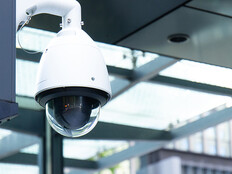The Use Case: Advanced Sensing for Proactive Monitoring
Rather than responding to incidents retroactively, electric utilities are deploying proactive sensor technology.
For example, ultraviolet cameras can shield out sunlight and detect specific light produced by corona effects, which can evolve into streamers or leaders bridging the gap between conductors to create an arc flashover. Before electricity starts jumping due to degraded connections, these cameras catch the corona effect and alert the maintenance crew of a potential future issue.
This UV camera technology is expensive, but not nearly as expensive as responding to and recovering from a fire. Detecting potential arcing early can prevent catastrophic failures and the resulting widespread burns that have become more commonplace, especially in western states.
Similarly, infrared thermal imaging cameras can detect heat signatures, indicating that transformers are starting to overheat. With thermal imaging, we can see the degradation happening over time; the appearance of more hotspots indicates that a transformer is heading toward failure. This allows us to proactively replace it.
Utilities are also using cameras to monitor issues such as pole tilt, or foliage and tree growth that can interfere with power lines. Instead of going through the motions of scheduled maintenance, utilities can intervene in a more targeted way as needed. This can save money and potentially prevent a widespread outage.
Click the image below for more coverage related to critical infrastructure.
AI-Powered Analytics: Making Sense of the Data
Artificial intelligence is central to the proactive monitoring of infrastructure, and this is where the IT side of the house comes into the picture. Rather than having people watch video feeds 24/7, algorithms analyze sensors, detect issues and trigger responses based on how each utility wants to handle different scenarios — for instance, sending a text, making a phone call or dispatching a crew.
This inclusion of AI enables the shift from the detection mindset to prediction and prevention. Going back to the example of thermal imaging, analyzing patterns over time can help identify gradual equipment degradation and predict when failures are likely to occur. This solves one of the most complex challenges in utility maintenance: having the right crew available when needed.
The same can be said for equipment and having the right materials on hand. In the case of a failure, a utility company would need to have the replacement transformer ready, as well as access to a specialized crew to install it. Predictive AI can help with the lead time needed to stage equipment and personnel, optimizing inventory management and crew scheduling based on predicted maintenance needs rather than responding to emergencies shorthanded or under-equipped.
RELATED: AI is the new cybersecurity frontline for utilities.
Monitoring Equipment Without Sensors
AI models need to be trained to recognize things such as sparks or foliage encroaching upon a power line. The level of work involved in this can vary, depending on what models might already exist.
But while nearly every predictive maintenance solution requires new sensors, there are a few exceptions. Utilities can implement “sensor-less” predictive maintenance using existing asset databases and manufacturer specifications. Every piece of equipment has a mean time to failure (MTTF), which is its expected operational lifetime.
If utilities maintain comprehensive asset databases that show exactly what equipment they have, what models they are and when each piece of equipment became operational, AI can be trained to extract MTTF values from manufacturer documentation and identify statistically likely failures. This is more cost-effective than sensor-based monitoring, but it depends entirely on data quality and emphasizes the importance of strong asset management.
SUBSCRIBE: Sign up for the StateTech newsletter for weekly updates.
















